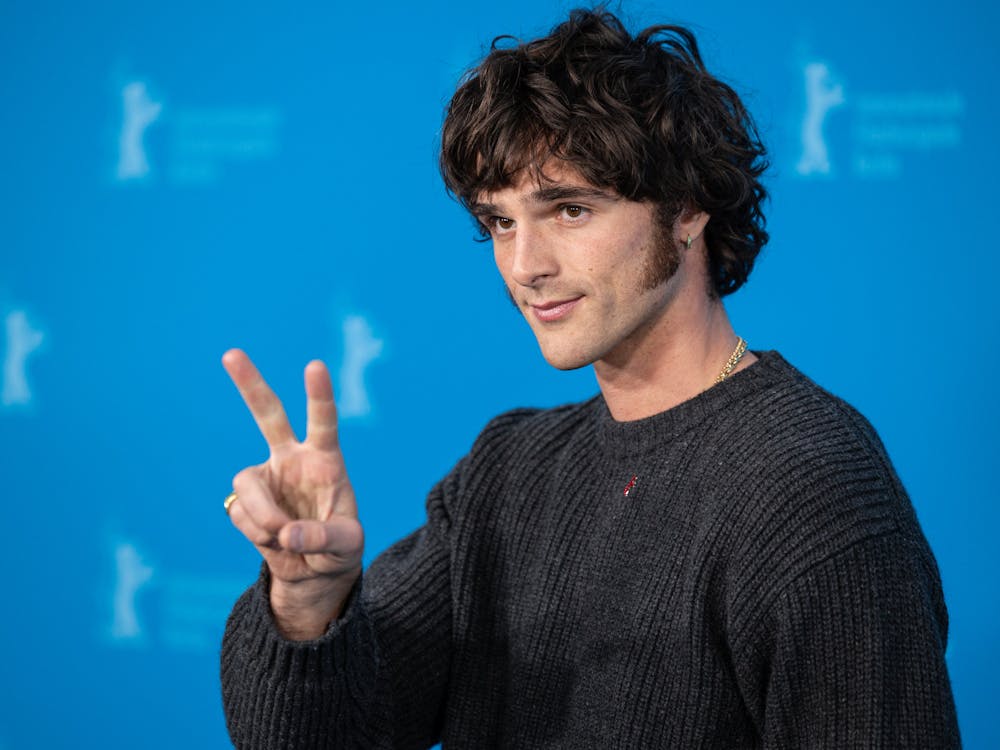You loved it in the beginning, but the older it got the messier it got, and you started feeling mad more than anything else, especially when you kept finding pee on the carpet, and in the very end, it died a rapid, out-of-left-field death caused by rabies: violent and hard to watch but harder to stop watching, and once it was over you wished none of it — the dog, the death — ever happened in the first place.
Before you click away from this article or my editor can highlight and leave a comment for revision — “Rephrase for clarity” — let me tell you: I’m the first one to admit that my description is over-the-top, vying for attention, maybe not the best option and overall confusing, even if it does leave you with a visceral image.
That’s exactly what it felt like watching Smile 2.
I entered the theater a defender and fan of the first Smile movie, so I had no vendetta against the franchise before the second movie tarnished its good name. Smile 2 was perfectly good for the majority of the two hours and 12 minutes, but by the end, it had unraveled like a cartoon mummy, leaving the entirety of the film naked to a newly angered and critical eye. I left the theater with only one thought in my mind: Smile 2 is a cash-grab that sacrifices the movie’s plot as well as the franchise’s integrity to hastily set up an unnecessary third movie.
The first movie depicted a demonic curse that latched from person to person via the afflicted committing a grizzly suicide in front of someone else. The witness in turn would experience seven days of paranoid delusions involving that patented smile before they would kill themself in front of another person — and so on. Smile ends with the protagonist committing suicide in front of her cop ex-boyfriend, who assumes the curse after her. In the beginning of Smile 2, that cop passes the curse onto a drug addict who witnessed the cop violently murder two criminals before running into the street and being mowed down by a truck.
This scene in particular signals what would be the movie’s downfall: The gore was too showy. It was effusive, as if the blood was rendered using different physics than in the first movie, and — though this might be a trick of memory — the blood in Smile 2 seemed brighter and more saturated than that seen in its predecessor. These are the early signs that Smile 2 was intended to be sensationalist or easily processed into digestible — maybe vomit-inducing — bite-sized clips of gore. The excessive gore keeps the viewer throwing up their hands to block the screen but peeking through their fingers like blinds, unable to look away and secretly wanting to see more.
The movie then introduces Skye Riley — a pop star who’s making her grand reintroduction to performing after surviving a car accident that killed her partner. Both of them were found to be drunk and/or high during the time of the accident.
One of the first things you’ll notice about Riley is that she drinks a lot of water. But being an entitled pop star, she doesn’t just drink regular tap, bottled Aquafina or Dasani. She drinks Voss, which is impossible to not notice in its conspicuous, large, geometric glass bottle. This is because the Smile franchise accepted Voss’ sponsorship offer in exchange for product placement, which Voss has been eager to post about online. This proves how the franchise abandoned creating a quality movie in exchange for money.
In addition to being an evident sell-out, Smile 2 recycles the same, tried-and-true yet hackneyed gimmicks they use in the first movie. It’s as if Smile 2 asked Smile for answers to the homework and Smile said, “Yes, just change the words.” Unfortunately, Smile 2 couldn’t even be bothered to cover its tracks.
For example, in the first movie, the protagonist’s therapist visits Riley’s house. While they’re talking in her living room, she gets a call: It’s her therapist. Accepting the call, she listens to her therapist over the phone, and she realizes that the woman in front of her is a demon in disguise.
In the second movie, Riley is riding in the car with her friend Gemma, with whom she reconnected after having a falling-out. It’s obvious where this is going: In the car with “Gemma,” Riley gets a call from the real Gemma, at which point it’s revealed that she’s sitting in the car with the demon.
The movie is also unoriginal with the proposed solution to the curse. In Smile 2, a man whose brother died from the curse reaches out to Riley for her help with ending it. To do so, her heart must stop in a nonviolent way where no one is around for the curse to transmit to, presumably because this would end the cycle of trauma. As an emergency room nurse, he has the medical knowledge and means to do this safely. This exact song and dance — ending a curse by stopping the heart and then reviving them, and so on — was notably done before in the 2021 Netflix series Fear Street, and I’m sure in other stories as well.
Despite my grievances with this solution to the curse, it would have at least been nice to see it successfully executed. It would have been nice if Riley and the brother’s attempts toward executing the solution were even real. Instead, in the final moments, Smile 2 takes a drastic leap back in the timeline to reveal that a significant portion of the plot was all a delusion, making it unclear when reality ceased.
In doing this, Smile 2 erased some of the few parts that had redeemed it in my eyes. Take, for example, one of the few themes the second movie performs better than the first. Smile is a movie about re-victimization — the tendency for a trauma victim to experience another instance of trauma later in life — and the inescapability of trauma cycles. Smile 2 covers this but adds the nuanced statement that with trauma, not only is the individual suffering but also the people around them.
This idea is driven home when Riley gets into an argument with her mother. She experiences a delusion of her mother breaking a mirror and then using one of the glass shards to kill herself. When she wakes up from this delusion, which turns out to be a delusion within a delusion, Riley finds that she was the one who killed her mother with the shard of the broken mirror.
As I was watching the movie, this is the only scene that seemed to reach beyond the screen and stick with me. I can watch gore without blinking an eye, and I can handle a jumpscare head-on, but this unexpected and emotional murder of Riley’s mother evoked a haunted feeling. Understandably, I was enraged when the mother was seen alive in the end. Why would a movie take the strongest scene and scrap it like amputating a healthy limb?
The final scene of Smile 2 built up to this: the viewer confused, after most of what they just watched turned out to be fake. On stage, during the first performance in her comeback tour, Riley donned the franchise’s eponymous smile. Then, she killed herself by beating a microphone into her skull, the viewer forced to voyeuristically watch a stadium of horrified fans witness their idol commit suicide.
This is the open-to-a-threequel ending for which Smile 2 sacrificed the franchise’s creative integrity. But even this wasn’t worth it, as a third movie will be impossible to execute from this point.
Logically, every person in that stadium should each bear the curse and die a week after the concert, passing on the curse to at least one other person. Then, the world’s population will continue to linearly dwindle en masse, resulting in a worldwide apocalypse. I do not believe that the minds behind Smile 2 have the capability of taking such a trying task — to produce a contained horror-turned-global-apocalypse movie — and succeeding. The other option is to neglect logic and go whichever direction they please, which is obviously unsatisfying.
Smile 2 was a money-hungry movie that, in initially setting out to create a respectable horror film on trauma, found what sells and decided to abandon integrity to obsessively chase a quick buck. Despite this, I still look back fondly on Smile like a teacher who liked the older sibling in class better than the younger one. When the threequel in the Smile franchise is released, there’s no doubt I’ll see it as soon as I can — if not to hate-watch it, then to sit cross-fingered and hopeful that the third child is more similar to the first.





